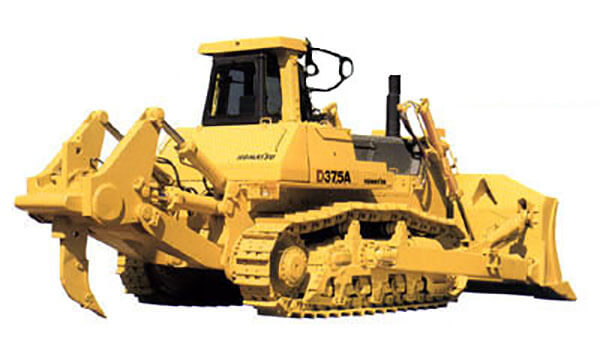1990
While equipment built to accommodate urban environments, by generating less noise, vibrations and emission, became more common, super sized equipment that could withstand harsh working conditions in places like giant mines were also developed.

By upgrading to the new foot type, it improved the basic performance of bulldozer operations such as pulling and leveling. The reworked control lever improved operability, and a big cab with a large capacity air conditioner improved comfort. This model was also fitted with a "clean engine" that passed the emission test of the EPA (Environmental Protection Agency), which was said to be the hardest regulation in the world.
Weight: 68200kg
Bulldozer
Since its first emergence in 1951, it took only 50 years for the hydraulic shovel to establish its primary position on construction sites worldwide. Its size ranges from mini to super size depending on the scale of construction, and during the half century, it kept evolving by achieving a minimum rear-swing radius and adapting styles that would work with characteristics of each site. Mirroring the movement of a human hand, a hydraulic shovel will continue to evolve during the 21st century.